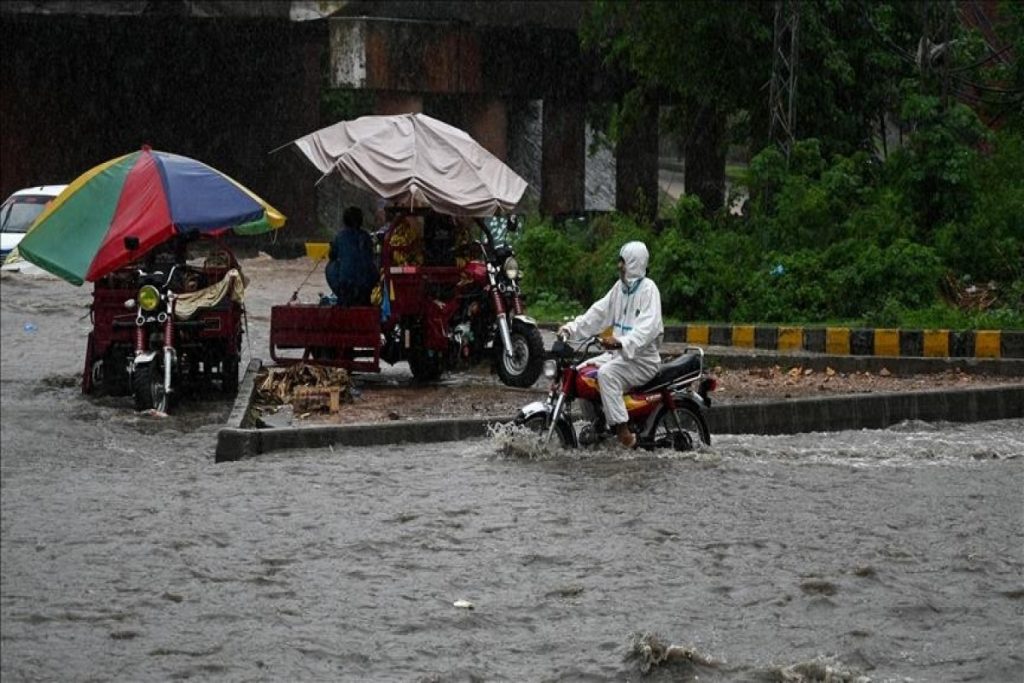Heavy overnight monsoon rains battered several districts of Punjab, including Lahore, and parts of Balochistan, causing widespread urban flooding and disrupting power, traffic, and essential services. In these weather-related incidents, 11 people have been killed and numerous others injured, highlighting serious vulnerabilities in urban and rural infrastructure.
Drainage Failures and Urban Flooding in Lahore
Lahore experienced torrential rainfall resulting in severe flash floods across low-lying neighborhoods and major thoroughfares. The city’s outdated drainage system failed to cope with the deluge, flooding areas such as Jail Road, Qurtaba Chowk, Gulberg, and Nishtar Town, where rainfall exceeded 85 mm. Floodwater mixed with sewage across residential areas, creating public health hazards and leading to reports of electrocution incidents due to exposed cables and power outages affecting thousands.
Tragic Electrocutions and Roof Collapses Cause Multiple Deaths
Critical incidents included:
- A child electrocuted near safety-compromised wiring.
- Two young siblings killed in Sheikhupura by a collapsed roof.
- A roof collapse in Lahore’s Taxali area resulting in a fatality and multiple injuries.
- Similar structural failures in Jhelum Valley and Nishter Colony led to additional casualties.
Overall, five deaths in Punjab were related to collapsing structures and electrocution during the rainstorm, underscoring the danger that deteriorating buildings pose during extreme weather.
Widespread Damage and Casualties Across Other Districts
The severe downpour and strong winds impacted a wide region:
- At least two fatalities and several injuries reported in Balochistan, caused by wall collapses in Khuzdar and Mastung.
- Houses collapsed in Sheikhupura, Vehari, Dera Ghazi Khan, and Attock, with several residents trapped or wounded.
- Infrastructure damage, including fallen solar panels, damaged roads, and power disruptions, was reported across Rawalpindi, Sahiwal, Okara, Mandi Bahauddin, Murree, and Gujranwala.
Emergency Response and Disaster Management Efforts
Emergency services most notably Rescue 1122, Lahore Waste Management Company, and the Water & Sanitation Agency mobilized swiftly. They issued public advisories to stay indoors, avoid flooded and low-lying zones, and reported that cleanup crews were deployed city-wide. However, some communities, particularly in less affluent areas, reported inadequate relief and delayed cleanup efforts.
Weather Forecast and Official Warnings Issued
The Pakistan Meteorological Department (PMD) has issued warnings of continued sporadic heavy rainfall and thunderstorms over the next 24 to 72 hours. Authorities have invoked Section 144 along rivers and canals to prevent public access, and have advised travelers to avoid non-essential movement in affected areas due to risks of waterlogging, landslides, and infrastructure failure.
Life Disrupted with Power Outages and Travel Challenge
The intense rainstorm caused widespread electrical outages due to short circuits and tripped feeders. Urban commuters faced flooded roads and stalled traffic, while rickshaw and taxi services came to a near-halt during peak timings. Businesses and schools within low-lying zones remained closed, amplifying early disruptions to daily routines.
Public Health Hazard from Sewage Mixing and Contamination
With sewer systems overwhelmed by rainwater, floodwaters brought contaminated liquid into homes and streets. Officials have warned of increased risks for waterborne diseases, urging residents to avoid contact with standing water and to use proper safeguards when returning to flooded residences.
Looking Ahead: Infrastructure Vulnerabilities Exposed
These weather events have exposed critical infrastructure shortcomings failure of drainage systems, unsafe building structures, and inconsistent emergency planning. Citizens and local officials have called for urgent reviews of drainage capacity, regular building safety assessments, improvement of storm water systems, and strengthened disaster preparedness in anticipation of further climate challenges.



Comments (0)
No comments yet. Be the first to comment!
Leave a Comment